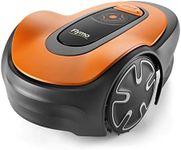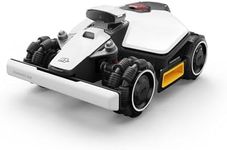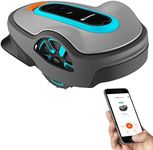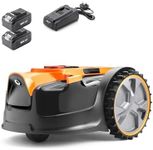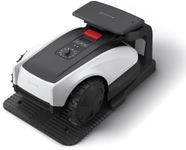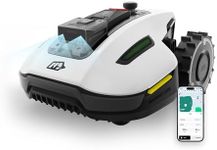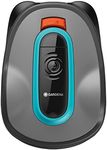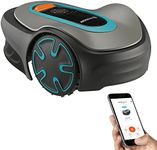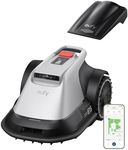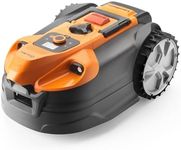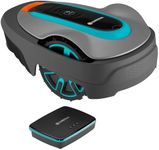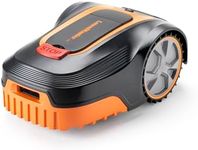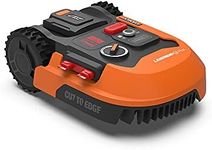Buying Guide for the Best Robotic Mowers
Choosing the right robotic mower can make lawn maintenance a breeze. These devices are designed to autonomously cut your grass, saving you time and effort. When selecting a robotic mower, it's important to consider various specifications to ensure you get a model that fits your lawn's needs and your personal preferences. Here are some key specs to look out for and how to navigate them.Lawn Size CapacityLawn size capacity refers to the maximum area that the robotic mower can handle. This is important because a mower designed for smaller lawns may not be efficient or effective on larger properties. Typically, lawn size capacities are divided into small (up to 0.25 acres), medium (0.25 to 0.5 acres), and large (over 0.5 acres). To pick the right one, measure your lawn and choose a mower that can comfortably cover that area.
Battery Life and Charging TimeBattery life indicates how long the mower can operate on a single charge, while charging time is how long it takes to recharge the battery. These specs are crucial because they determine how often the mower will need to return to its charging station and how long it will take to resume mowing. Longer battery life and shorter charging times are ideal for larger lawns. If you have a smaller lawn, a shorter battery life may suffice.
Cutting Height and WidthCutting height is the range of heights at which the mower can cut the grass, and cutting width is the width of the path the mower cuts in one pass. These specs are important for achieving the desired look of your lawn. Cutting height typically ranges from 1 to 4 inches. If you prefer a well-manicured lawn, look for a mower with a wide range of cutting heights. Cutting width affects how quickly the mower can cover your lawn; wider cutting widths are more efficient for larger lawns.
Navigation and Mapping TechnologyNavigation and mapping technology refers to the system the mower uses to navigate your lawn and avoid obstacles. This is important for ensuring the mower can efficiently cover your lawn without getting stuck or missing areas. Basic models may use random navigation, while advanced models use GPS or boundary wires for precise mapping. If your lawn has complex layouts or many obstacles, opt for a model with advanced navigation technology.
Slope HandlingSlope handling indicates the maximum incline the mower can manage. This is crucial if your lawn has hills or uneven terrain. Slope handling is usually expressed as a percentage or degree. For example, a mower that can handle a 20% slope can manage inclines of up to 11 degrees. Choose a mower with slope handling capabilities that match the steepest parts of your lawn.
Weather ResistanceWeather resistance refers to the mower's ability to operate in various weather conditions, such as rain or extreme temperatures. This is important for ensuring the mower can function reliably throughout the mowing season. Look for models with good weather resistance if you live in an area with unpredictable weather. Some mowers even have rain sensors that will return the mower to its charging station during rain.
Noise LevelNoise level indicates how loud the mower is during operation. This is important for maintaining a peaceful environment, especially if you have close neighbors or prefer quiet. Noise levels are measured in decibels (dB). Quieter models typically operate around 60 dB, which is about the level of a normal conversation. If noise is a concern, look for models with lower noise levels.
Smart FeaturesSmart features include connectivity options like Wi-Fi or Bluetooth, app control, and integration with smart home systems. These features are important for convenience and ease of use, allowing you to control and monitor the mower remotely. If you value high-tech solutions and want to manage your mower from your smartphone, look for models with robust smart features.

